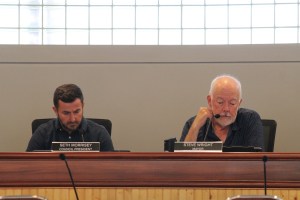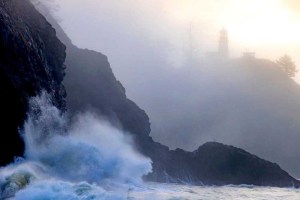Fishery managers adopt rules on fin clipping, set seasons for 2004
Published 5:00 pm Monday, August 25, 2003
The Oregon Fish and Wildlife Commission has adopted new angling rules that amend the definition of a “fin clip,” restrict wild spring chinook harvest on the Rogue River, and reduce the annual sturgeon bag limit to five fish. The rules go into effect Jan. 1, 2004.
Trending
The following information summarizes the regulation changes for 2004:
Statewide Regulations
The annual sturgeon bag limit will drop from 10 to five fish per year, which will lengthen the retention periods and spread out the catch among anglers in the Columbia River. The rule was adopted statewide for consistency among angling zones and because most sturgeon are harvested from the Columbia River in Oregon.
Trending
The definition for “fin-clip” will change to “a healed scar where a fish fin has been clipped.” The new rule will allow anglers to legally harvest hatchery-bred fish with partial fin clips. In most fisheries, nearly all of the hatchery fish have a fin clip to distinguish them from naturally produced fish.
Northwest Zone
A permanent selective fisheries will occur for the harvest of fin- clipped hatchery spring chinook salmon from lower Columbia River tributaries and select area fisheries. The season expands harvest opportunities and makes spring chinook seasons consistent in the lower Columbia River area. Spring chinook from the Klaskanine, Lewis and Clark, and Youngs rivers will need to have a left ventral fin-clip rather than the more usual adipose fin-clip.
Southwest Zone
The bag limits for fall chinook harvest from the Rogue River will expand to the normal zone regulations to allow anglers to retain two adult salmon per day and 20 per year. The change was implemented because fish population data indicate the populations have recovered to a healthy status.
The allowed harvest of wild spring chinook salmon in the Rogue River will be reduced because populations have declined. The Rogue River will be open for hatchery-bred adipose fin-clipped salmon the entire year. One unmarked chinook salmon may be retained per day, and three per season, from the mouth upstream to Whiskey Creek Jan. 1 – May 31, 2004, and from Whiskey Creek upstream to the markers located downstream from Cole Rivers Hatchery diversion dam Jan. 1 – July 31, 2004. The harvest of non-adipose fin-clipped chinook salmon also is allowed as per the permanent zone regulations from the mouth of the Rogue River upstream to Whiskey Creek June 1 – Dec. 31, 2004, and from Whiskey Creek upstream to the Hog Creek boat landing July 15 – Dec. 15, 2004, and from the Hog Creek boat landing upstream to the ODFW markers located just downstream of Gold Ray dam July 15 – Sept. 30, 2004. The permanent zone regulations allow two adult salmon per day, 20 unmarked salmon per year, and five jack salmon per day.
The “Hatchery Hole” along the Rogue River from McGregor Park upstream to the deadline at Cole Rivers Hatchery will close to angling after 7 p.m. during the spring chinook season. The change was necessary to reduce illegal fishing activities.
Willamette Zone
All trout retained from Hills Creek Reservoir in the upper Willamette River drainage must be adipose fin-clipped starting in 2004. The change is designed to better protect wild bull trout.
The 2004 regulations pamphlet will be reformatted to improve understanding of the Willamette Zone trout regulations.
Columbia River Zone
Harvest of sockeye salmon will not be allowed under permanent regulations in the Columbia River Zone. A temporary rule will be adopted to allow sockeye harvest if the number of sockeye migrating past Bonneville Dam rises above 75,000.
Retention of spring chinook with an adipose fin-clip or left ventral fin-clip will be allowed under the permanent regulations in the Youngs Bay, Blind Slough and Knappa Slough “select area” fisheries in the lower Columbia River. The change was made because 100 percent of the spring chinook returning in 2004 will be fin-clipped.
Marine Zone
The rules for off-shore pelagic species will allow chumming and multiple rods in areas outside of three miles, provided only pelagic species are retained. The daily bag limit will be 25 fish in the aggregate for pelagic species. The new rules primarily affect the Oregon tuna fishery.
The daily bag limit for surfperch will drop from 25 to 15 per day to maintain the sustainability of surfperch fisheries. The change makes the bag limit consistent with the state of Washington and is expected to reduce the harvest by 3 percent.
The allowed number of crabs that can be held in a holding pot in bays and estuaries will change to no more than 24 crabs per container. The new limit was adopted to reduce crab mortality in crowded pots.
No regulation changes were adopted for the Central, Northeast, Southeast and Snake River zones.









